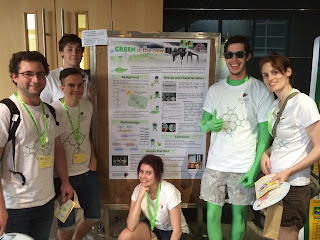As we near the start of the second leg of the
IndigoV Indian Ocean expedition, it is time to reflect on what we have learnt during the first leg of the voyage.
- No matter how well prepared, something will go wrong
- When trying to lay low, try not to appear in
newspapers
- Very fresh tuna is chewy but better than 2-minute noodles
- The Indigo V is relatively water-tight even during very big storms (luckily)
- If we say there will be restaurant quality food on board, let's not kid ourselves, the 2-minute noodles will do very well...
- Electrical equipment and seawater do not mix (actually, any equipment and seawater does not mix)
- Clothing drenched in seawater never drys properly
- There are a lot of (very) big ships sailing the Indian Ocean
- Never let a certain Martin Ostrowski at the helm when there are big waves and you want to sleep below deck. (I heard he likes to surf...)
-
Whales are amazing and always appear when all the camera's batteries are flat
Jokes apart, the whole experiment of the Indigo V expedition was a unique experience, showing it is possible to run scientific expeditions with less expensive equipment, and in a more cash efficient way. Indeed, the whole expedition is running at the price of a single day from a standard research vessel.
"Accessible" projects such as the IndigoV Indian Ocean expedition are important on scientific grounds, but also vital to engage interest within the scientific community, as well as the general public and media.
This opens the wide and exciting world of crowd funding of science. We might never be as successful as the guys building a
space telescope, but the general idea is the same in that research should not be conducted in a small dark laboratory, behind closed doors. Scientist should be engaging with wider community and be approachable even if it takes time out of staring at computers or petri dishes.
The main aim of science is to make people think, feel included and want to participate. I'm not particularly proud of myself when I have blank stares from people when I am trying to explain what I do!
So onward and upward (or north-east-ward to be more precise!) with the IndigoV Indian Ocean expedition. Good luck to the brave sailors.
To be continued....





















_-_Ships_in_a_Heavy_Sea_Running_Before_a_Storm_-_WGA16309.jpg)









